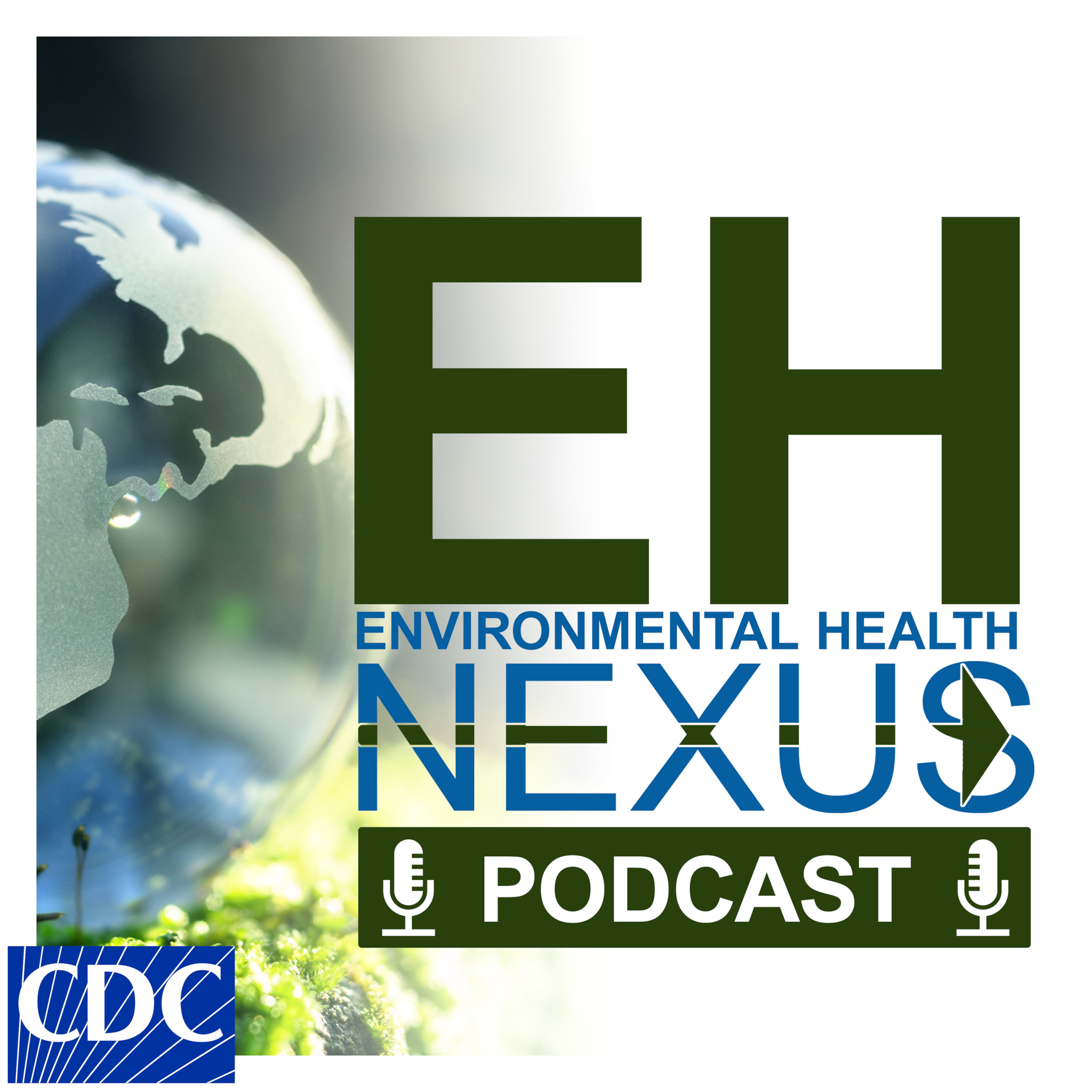CDC Environmental Health Nexus Newsletter
Healthy Environment, Healthy You
August 17, 2022 | Volume 12

Environmental Health Nexus
Centers for Disease Control and Prevention’s (CDC) Environmental Health Nexus (EH Nexus) shares environmental health messages with the public and gives special attention to environmental justice.
EH Nexus newsletters provide information about environmental health issues and offers information that promotes actions to help save lives. The newsletters communicate how to reduce harm from public health threats, including climate change, contaminated food and water, toxic environments, and inadequate systems and practices.
This issue covers the following topics:
- Freshwater Cyanobacterial Blooms
- Cyanobacteria Can Impact Drinking Water
- Signs of a Cyanobacterial Bloom
- Protect Your Pets and Livestock
- Check for Advisories Before Visiting a Body of Water
- Stay Out of Water That has a Bloom
- Prevent Harmful Algal and Cyanobacterial Blooms From Forming
- Additional Resources
- Environmental Health Updates and Resources
If the newsletter was emailed directly to you, we thank you for subscribing. If you are not a subscriber, please click here, enter your email address, and click the subscribe button.
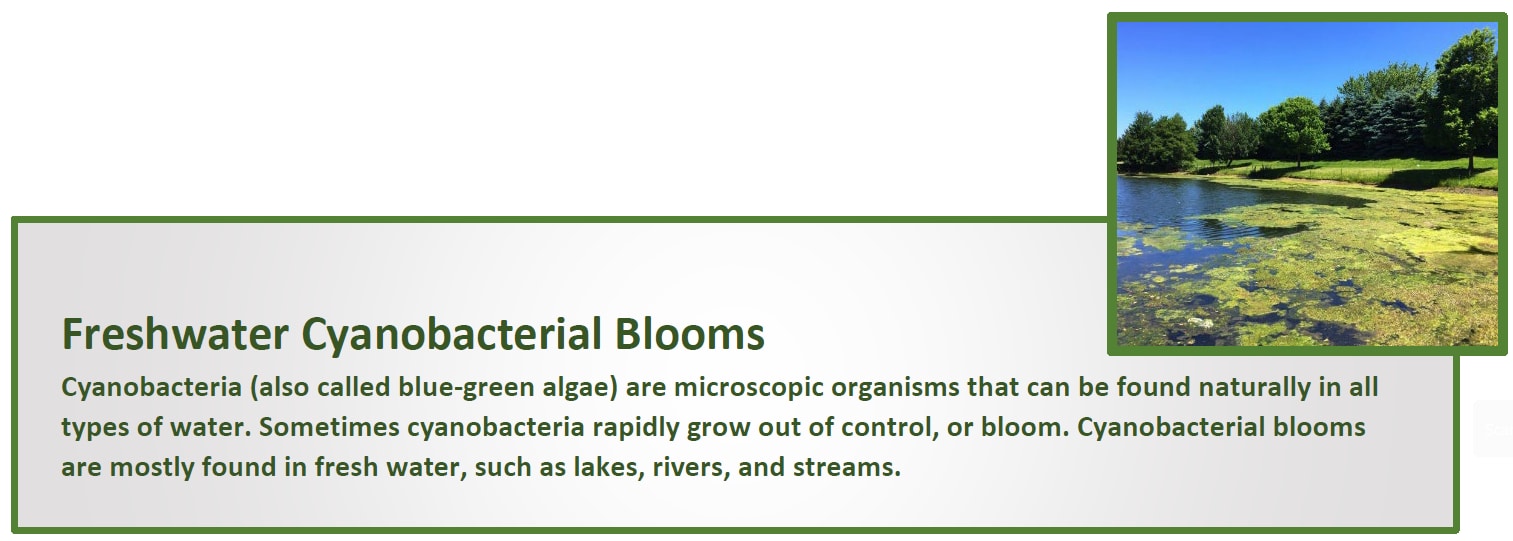
In the United States, cyanobacterial blooms have been found in freshwater bodies in all 50 states, Puerto Rico, and the U.S. Virgin Islands. These blooms more often occur in still water, such as lakes or ponds, but can also happen in rivers or streams. Cyanobacteria cause most freshwater blooms of public health concern.
Some cyanobacteria produce toxins (poisons) called cyanotoxins. Your symptoms and how sick you get can vary depending on the type of exposure, the type of cyanobacteria that are present, and the type of toxin (poison) involved. In some cases, more than one toxin may be present. People are mainly exposed in the following ways:
- Skin contacts through activities like swimming
- Breathing in tiny airborne droplets or mist that contain toxins
- Swallowing water that contains toxins
- Eating food or supplements containing toxins
People exposed to cyanotoxins may experience the following symptoms, depending on the type of toxin:
- Stomach pain, vomiting, or diarrhea
- Headache, fever, tiredness, or other general symptoms
- Skin, eye, nose, or throat irritation
- Neurological symptoms such as muscle weakness or dizziness
Exposure to some cyanotoxins can also harm your liver and kidneys. Contact your healthcare provider or poison control center if you think you may have symptoms caused by cyanobacteria or their toxins.
Cyanobacteria Can Impact Drinking Water
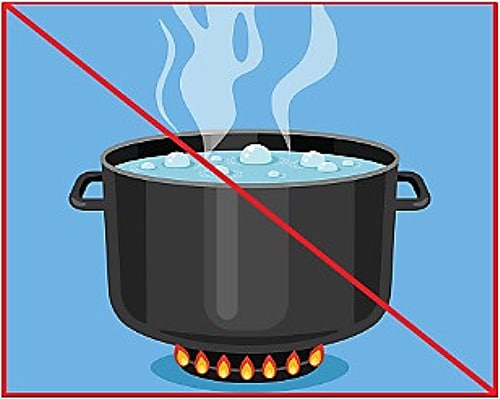
Harmful cyanobacteria may grow in water bodies that supply tap water. Although many water treatment plants can remove these toxins, tap water can be contaminated in certain situations. Cyanobacteria can also produce substances that are not harmful but can change the taste or smell of tap water.
Do not boil water contaminated with toxins. Boiling water does not remove toxins and can concentrate the toxins.
If you have concerns about the appearance, smell, or taste of tap water that you are using, stop using it and contact your water utility or health department.
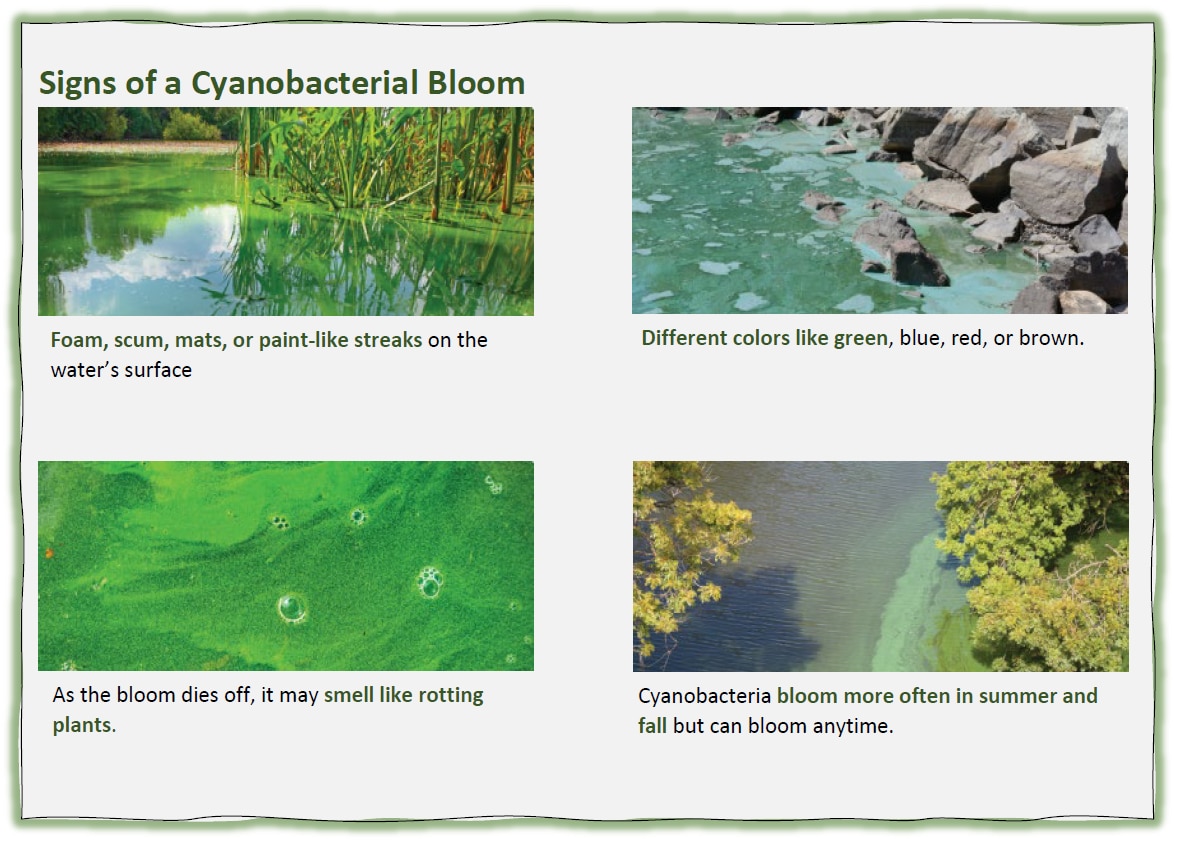
Protect Your Pets and Livestock
Animals can get very sick or even die within minutes to days after exposure to cyanobacteria. Seek veterinary care immediately if your pets or livestock seem sick after going in or near water. Animals are often the first affected, in part because they are more likely to swim in or drink from bodies of water that contain cyanobacteria.
Keep pets and livestock away from water if you see signs of a cyanobacterial bloom, like scum or changes in the water’s color. Do not let your pets or livestock do any of the following:
- Drink the water
- Swim or play in the water
- Eat near the water
- Lick their fur after being in the water
- Eat dead animals, such as fish, found near the bloom
- Eat mats of cyanobacteria
When in doubt, stay out. CDC’s Animal Safety Alert [PDF – 2.2 MB] fact sheet has tips to protect your pets.
Check for Advisories Before Visiting a Body of Water
Check for local and state swimming or fishing advisories before visiting lakes, rivers, and oceans. Follow advisories to reduce your chances of getting sick.
Health or environmental protection departments often post advisories on their websites, near the water, or both. The Environmental Protection Agency (EPA) also has a list of many state monitoring programs.
Visit your state government website to find out more information about water testing and beach closures in your area. Some states provide information on state laboratory testing as well as other environmental and health information.
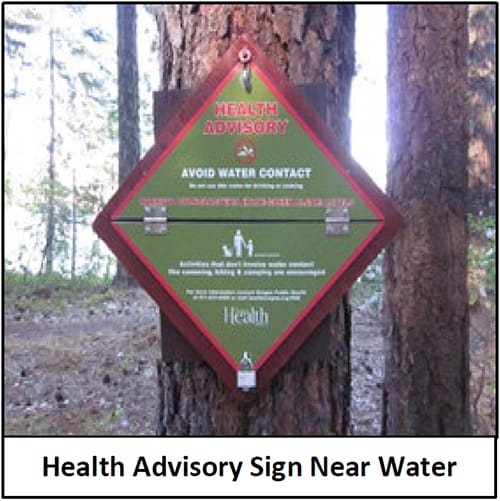
Stay Out of Water That Has a Bloom
If you see signs of a bloom, stay out of the water, and keep your pets out of the water. You cannot tell if a bloom is harmful by looking at it, so it is best to use caution and stay away. Do not fish, swim, boat, or play water sports in areas where there may be cyanobacterial blooms.
Do not go into or play in water that
- Smells bad
- Looks discolored
- Has foam, scum, algal mats, or paint-like streaks on the surface
- Has dead fish or other animals washed up on its shore or beach
Prevent Cyanobacterial Blooms From Forming
You can prevent blooms from forming by limiting your use of fertilizer to only the recommended amount on your farm, yard, and garden. This will reduce the amount of certain nutrients running off into nearby water bodies. Certain nutrients in the water can help cyanobacteria grow more quickly than usual. Also, if you have a septic system, maintain it to keep wastewater from leaking and seeping into nearby bodies of water. Wastewater is full of certain nutrients that can feed cyanobacteria.
Additional Resources
Join us for an engaging food safety webinar, Set the Table: Improving Restaurant Food Safety through Science and Practice.
You’ll hear from Dr. Laura Brown and Lieutenant Commander Beth Wittry from CDC and Ms. Thuy Kim from the University of Minnesota. They will share information on key CDC training and surveillance resources for outbreaks, along with exciting new research findings on restaurant food safety.
The webinar will be held Tuesday, September 13, from 1 to 2 p.m. Eastern Daylight Time.
Webinar hosted by CDC’s Environmental Health Nexus.

Environmental health programs work to keep communities safe. Water, Food, and Environmental Health Services Branch (WFEHSB) staff help strengthen these frontline programs by providing resources, technical assistance, and funding. We focus on safe water, food safety, environmental health practice, and vessel (cruise ship) sanitation.
Thank you for reading. Do not keep this great resource to yourself! Please share it with your colleagues and networks.
If you are not yet a subscriber, please click here, enter your email address, and click the subscribe button at the bottom of the webpage.
